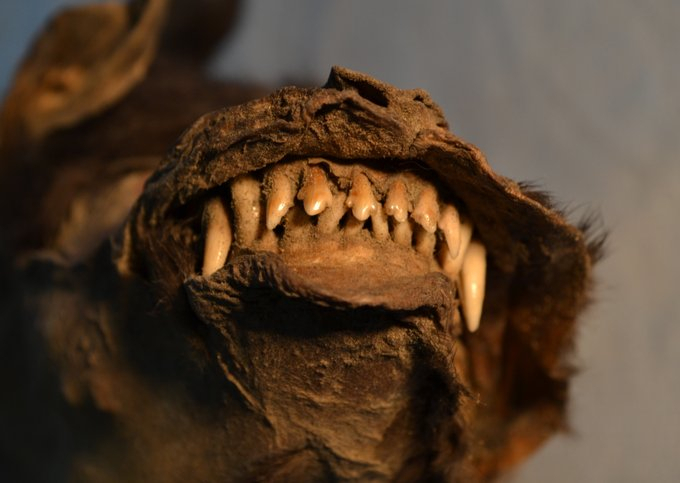How animals on earth used to live during the Ice Age, which began 2.4 million years ago and lasted until 11,500 years ago — is one of the most popular topics among the researchers. Recently they have looked into a 14,000-year-old mummified canine and the findings inside its belly shocked them.
A team of researchers conducted a study on the Ice Age puppy with fur and teeth intact. When they looked into the stomach of the mummified canine, they found the remains of another animal with yellow fur.
The Shocking Finding

Previously an autopsy led to the conclusion that the animal inside the canine—named as Tumat, after the Siberian site where it was found in 2011—was a cave lion. But after conducting a DNA sequencing, the scientists came to know that the Ice Age puppy ate bits of a woolly rhinoceros just before it died. This analysis was part of a large study on the megafauna published this week in Current Biology.
Researcher Edana Lord, who is a Ph.D. student at the Center for Paleogenetics explained that the discovery of the woolly rhino was quite unexpected as it is unusual to find tissue from another animal preserved in any animal's stomach, even though some studies have been done on "plant remains from stomach contents."
The recent findings can help scientists to understand more about the ancient dog population, evolutionary history, and how a puppy managed to ingest that prehistoric animal.
As per Lord, the frozen soil in Siberia, where the Ice Age puppy was discovered, helped to preserve ancient animals, like a giant freezer, "keeping things cold for years."
Earlier researchers found another mummified dog in 2018, Dogor — an 18,000-year-old preserved canine specimen -- from Siberia and its DNA analysis put the canine somewhere between a dog and a wolf. As some of the team members of the recent study, were involved in Dogor's finding, Lord said that working on these well-preserved specimens "gives us a better understanding of what the ice age animals looked like" and the samples have also given evidence of diet and health.
In terms of the last meal of Tumut, Lord said that the Ice Age puppy was perhaps an ancient canid who worked together to take down huge animals or maybe someone else was involved in the hunt of the woolly rhino — either a carnivore or an early human.









